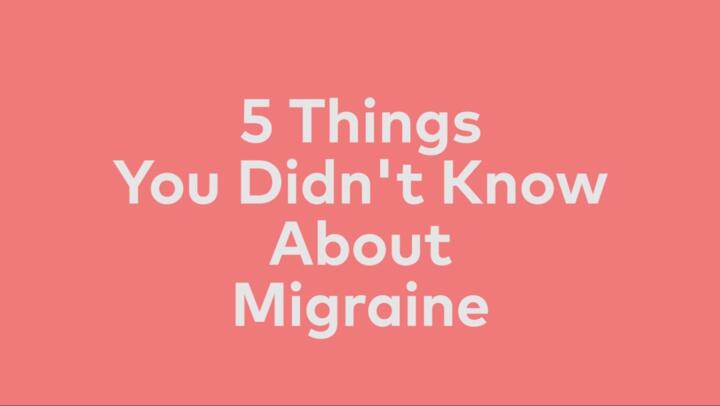What is essential tremor?
Essential tremor is a neurological disorder that causes involuntary trembling or shaking. While it can affect any body part, the hands and arms are the most common area of involvement. The tremor becomes noticeable with purposeful movements, such as holding a cup, eating, writing, or threading a needle. This is a kinetic, action or intention tremor. It is different from a resting tremor, which is characteristic of Parkinson’s disease. However, in severe or advanced cases, people with essential tremor may have a tremor at rest. Other names for the disorder include familial tremor, hereditary tremor, and benign tremor.
About 10 million Americans have essential tremor, making it one of the most common neurological disorders. It is a highly variable disorder. For some, the tremor is mild, while others have a tremor that interferes with daily activities. In most people, the tremor starts mildly and progresses to affect other body parts, such as the jaw. However, some people have no progression. The tremor can also start as early as childhood or not appear until older adulthood.
The cause of essential tremor is not fully known. Some experts believe it is a problem with the cerebellum—an area of the brain that controls muscle coordination. Research suggests it may undergo degenerative changes in essential tremor.
In most cases, essential tremor is an inherited disorder. It seems to be an autosomal dominant trait in most families. This means it only takes one copy of a defective gene to cause the condition. So, if one parent has essential tremor, there is a 50% chance of passing it to a child. However, the course of the disorder can vary among family members. Some people develop essential tremor spontaneously. They have no family history of the disorder.
Essential tremor is not life threatening, but it can be life altering. Essential tremor treatment may not be necessary if the tremor is not interfering with daily activities. However, there are options for moderate or embarrassing tremors. This includes medication and surgery.
See your doctor if you notice new trembling or shaking in a body part. Ruling out other causes is an important step in protecting your health.
What are the symptoms of essential tremor?
For most people with essential tremor, symptoms begin gradually. The main symptom is trembling or shaking of the hands and arms when you use them. The shaking is involuntary, meaning you aren’t trying to shake and you can’t stop it. The tremor may worsen with fatigue, stress, caffeine, low blood sugar, nicotine, and temperature extremes. Rest tends to improve the tremor. Usually, essential tremor causes tremor in the hands and arms on both sides. However, it may be more predominant on one side.
Other common symptoms of essential tremor
Essential tremor can affect other body parts, including the head and jaw. Other essential tremor symptoms include:
Ataxia, which is uncoordinated movements leading to balance and gait problems
Head tremor causing nodding or shaking
Internal tremor, which people describe as a shakiness inside but that others can’t see
Postural tremor, which occurs when you try to maintain a position against gravity, such as holding your arms outstretched
Vocal tremor causing quivering, quavering or shaking voice
Essential tremor vs. Parkinson’s disease
It’s common for people to mistake essential tremor for Parkinson’s disease. Most people think of Parkinson’s disease first, even though it’s much less common than essential tremor. There are key differences between the two conditions including:
Body parts: Both conditions usually start in the hands. Essential tremor can also involve the head and voice, while Parkinson’s rarely does. Parkinson’s tremor usually affects the legs and other body parts.
Other symptoms: Essential tremor can cause minor balance problems. But Parkinson’s disease can cause stiff legs, a shuffling gait, and a stooped posture.
Mortality: Essential tremor usually gets more pronounced with time, but is not life threatening. Parkinson’s disease itself is not life threatening, but its complications can shorten life expectancy.
Tremor timing: Essential tremor occurs or worsens with action, while rest reduces it. Parkinson’s tremor happens at rest and tends to improve with action.
Another key difference between the two is the effect of alcohol. Alcohol usually provides temporary relief from essential tremor. However, excessive alcohol consumption can lead to severe rebound tremor when the alcohol wears off. Alcohol has little to no effect on Parkinson’s tremor. This is often a useful observation when diagnosing the cause of tremor.
What causes essential tremor?
Experts do not fully understand the exact cause of essential tremor. Research suggests the problem may be with the cerebellum. The cerebellum is an area of the brain that coordinates muscle movements. In essential tremor, it may not communicate the way it should with other areas of the brain. Some studies have even shown some degeneration in the cerebellum in people with essential tremor. Scientists are working to identify which gene mutations are responsible for essential tremor and how they affect the nervous system.
What are the risk factors for essential tremor?
Most cases of essential tremor are due to an inherited gene mutation. Research is exploring the exact genes and the way they are inherited. But most experts believe it is an autosomal dominant disorder. This means you only need one copy of the defective gene to get the condition. You inherit one copy of each gene from each of your parents. So, if one parent has essential tremor, you have a 50% chance of inheriting the gene and developing it yourself.
There may be more than one gene involved in essential tremor, because the inheritance pattern varies. Sometimes, people develop essential tremor with no family history of it. It’s also possible that environmental factors play a role
The risk of developing essential tremor also increases with age. It is possible for children to have essential tremor. But the incidence goes up after age 40.
How is essential tremor treated?
Deciding whether or not to treat essential tremor depends on the severity of the tremor and whether it affects daily living. People with a mild tremor may not require any kind of treatment. However, they can still benefit from self-care strategies. This mainly involves avoiding things that worsen the tremor and getting adequate rest. Practicing relaxation techniques can also be helpful.
As tremors get more severe, adjustments to daily activities may be necessary. This can include strategies like using a straw to drink and large handled utensils to eat. Occupational therapists can suggest specific tactics for adapting activities. Physical therapy can also be useful to strengthen weak muscles and improve control and coordination.
Other treatment options include:
Oral medicines, including beta blockers, tranquilizers, and antiseizure drugs. These medicines work by controlling the actions of brain chemicals called neurotransmitters.
Botulinum toxin injections work by blocking nerve signals to muscles causing muscle relaxation. It is necessary to repeat injections every 3 to 4 months.
Deep brain stimulation (DBS), which involves implanting a small electrode in the brain. It connects to a pulse generator implanted in the chest. DBS works kind of like a pacemaker for the heart. The pulse generator sends electrical pulses to the electrode. This interrupts the faulty brain signals that cause the tremor.
Focused ultrasound, which is a noninvasive procedure. It uses sound waves to target and destroy a specific area of the brain and stop the tremors.
What are the potential complications of essential tremor?
Essential tremor does not pose a serious risk to long-term health. However, it can cause complications that interfere with daily living and decrease independence. It can also cause people embarrassment. As symptoms worsen, it can become difficult or impossible to write legibly, feed yourself, and complete self-care activities. People with vocal tremors may eventually struggle to speak. Seeking regular medical care can help manage symptoms, keep you up to date on the latest treatment strategies, and maintain your quality of life.


















